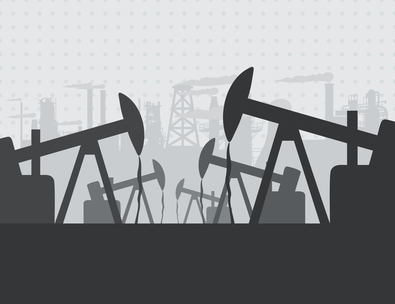Enhanced Oil Recovery Techniques – What Are They?
 Enhanced Oil Recovery Techniques – What Are They?
Enhanced Oil Recovery Techniques – What Are They?
Canadian researchers have made recent advancements in enhanced oil recovery with a new method that boosts production by 10%
The Basics: Primary and Secondary Phases
Oil production employs the use of various methods that allow oil to be extracted from deep within ground reservoirs or offshore sites. At its core, the extraction consists of three phases: primary, secondary, and tertiary.
The primary phase of production is limited to hydrocarbon deposits that are more accessible and easier to extract due to their tendency to rise closer to the surface. This phase employs the use of the symbolic oil pump jacks seen in popular media.
The secondary phase follows the primary. Gas or water is injected into the reservoir in order to move oil closer to the surface and to make extraction easier.
However, even with these two methods combined, up to 75% of the oil reservoir can remain untouched!
The Tertiary Production Phase: Enhanced Oil Recovery (EOR)
The tertiary phase is also known as enhanced oil recovery, or EOR for short. It is a collection of methods that allow for more effective oil extraction when the primary and secondary phases aren’t sufficient. Typically, it is used on hard terrain that is difficult to penetrate and irregular in formation. It is also useful in wells that contain heavier oil that is evidently more difficult to extract. Typical EOR methods can yield up to three times more oil than primary or secondary phase methods. The most popular EOR methods are thermal recovery, chemical injection, and gas injection.
Thermal recovery is the most popular in the US, accounting for 50% of EOR operations conducted. Put very simply, it’s very much analogous to soaking your dishes in hot water, which loosens up grease to make them easier to wash. Dry heat or steam is injected into the reservoir in order to loosen up the oil and reduce its thickness, making it easier to extract.
Chemical injection is one of the least used EOR methods, representing only 1% of EOR applications. Again, using the dishwashing analogy: chemical injection is like using soap on crusty (and greasy) dishes. Soap is formulated so that it undercuts caked on food, releasing the tension between the gunk and the surface of the plate. Chemical injection uses long-chained polymers which are in fact found in many modern dish washing detergents. Similarly, these polymers loosen up the oil along reservoir channels, making the surface tension have less of an effect.
Lastly, gas injection in EOR is unlike secondary phase gas injection. Secondary phase mainly uses the gas to displace or move oil to the surface to make it easier to extract, whereas EOR gas injection utilizes gases such as carbon dioxide to both mix and displace oil more effectively, and increasing flow. CO2-EOR is quickly gaining popularity for its ability to use naturally occurring CO2 deposits, or CO2 created as a byproduct from an industrial process.
The Future: Cyclic Production with Continuous Solvent Injection (CPCSI)
A team of Canadian researchers from the University of Regina are developing a new method of EOR called Cyclic Production with Continuous Solvent Injection (CPCSI). The intricacies of the method are very complex, but ultimately, how it differs from other EOR methods is the continuous cyclical and injection process that it employs.
Let’s bring back the dish washing analogy one more time… but turn it up a few notches – we’re now talking about your average home dishwashing unit. It contains the dishes in an almost pressurized manner and goes through soaping and rinsing cycles until a set number of cycles have been completed and the dishes rendered pristine.
This is basically CPCSI, except you’re now dealing with oil reservoirs and heavy industrial machinery. With CPCSI, reservoirs are pumped with a vaporized solvent (analogous to dishwasher detergent). The vaporized solvent maintain high pressure in the oil reservoir, all the while loosening up all the nooks and crannies of oil.
Shut-in/open wells are used at the bottom of the reservoir to depressurize the reservoir before it once again cycles through into re-pressurization. Oil flow becomes foamy and easy to control, while internal mechanisms filter out the solvent. Experiments show a 10% increase in oil production using CPCSI methods (85% reservoir recovery versus up to 75% recovery using existing EOR methods). This new technology is still under development but is garnering much attention and interest with multiple journal publications. More announcements are to come in the near future.

